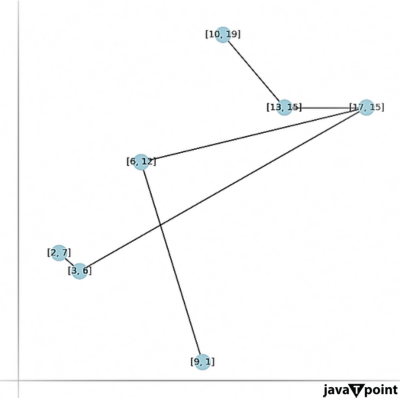DS Tutorial
DS Array
DS Linked List
DS Stack
DS Queue
DS Tree
DS Graph
DS Searching
DS Sorting
Differences
Misc
DS MCQ
K-D Tree in Data StructuresIntroductionThe K-D tree, also known as the K dimension tree, serves as a prominent data structure for the organization of points in multidimensional space, often when K represents a considerably high number. The allure of these structures lies in their ability to facilitate diverse methods of searching in the realm of multidimensional spaces, including range and nearest-neighbor searches. K-D Trees: The FrameworkEvery node within a binary tree is a manifestation of a "K-D Tree" and corresponds to a point in the K-dimensional space. The space itself is divided into two realms through the hyperplanes, which each non-leaf node in the tree embodies. The chosen axis, corresponding to one of the K dimensions, aligns itself parallel to these hyperplanes. The selection of an axis can be approached through various methodologies, though the most conventional approach entails cycling sequentially through each of the K dimensions before defining a midpoint to enact the division of the space. Unlocking the Mechanics of a K-D TreeAt its heart, the K-D tree operates as a binary tree, with each node representing a k-dimensional point, thereby bifurcating the space into two distinct half-spaces. Here's a closer examination of the process:
The Blueprint for Constructing a K-D TreeThe construction of a K-D Tree hinges on the recursive division of points within space to yield a binary tree. The journey commences by selecting an axis. Subsequently, the remaining points are partitioned into two subsets based on their location concerning the partitioning hyperplane. This partitioning involves the selection of the midpoint along the axis. Algorithm 1: Creating a K-D TreeWhen correctly executed, the resulting tree maintains balance, with every leaf node residing at an approximate equidistance from the root. To achieve this equilibrium, it is imperative to consistently opt for the median point. Additionally, it's noteworthy that pinpointing the median introduces complexity, necessitating the employment of a distinct algorithm. Failure to select the median point may result in an imbalanced tree. To address this, one approach involves employing a sorting algorithm to arrange points along the chosen axis and leveraging the median of these points as the splitting plane. Code: Output: Point found Point not found 
In the presented code, a KD tree (K-dimensional tree) is brought into action to conduct operations such as insertion and the quest for points within the realm of K-dimensional space.
Next TopicKnapsack Problem in Data Structure
|
 For Videos Join Our Youtube Channel: Join Now
For Videos Join Our Youtube Channel: Join Now
Feedback
- Send your Feedback to [email protected]
Help Others, Please Share









